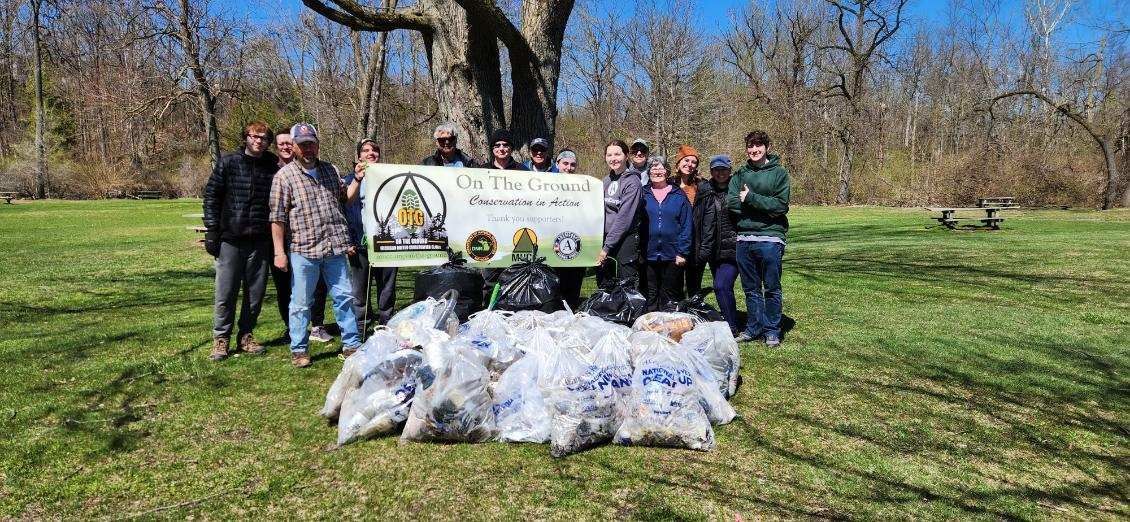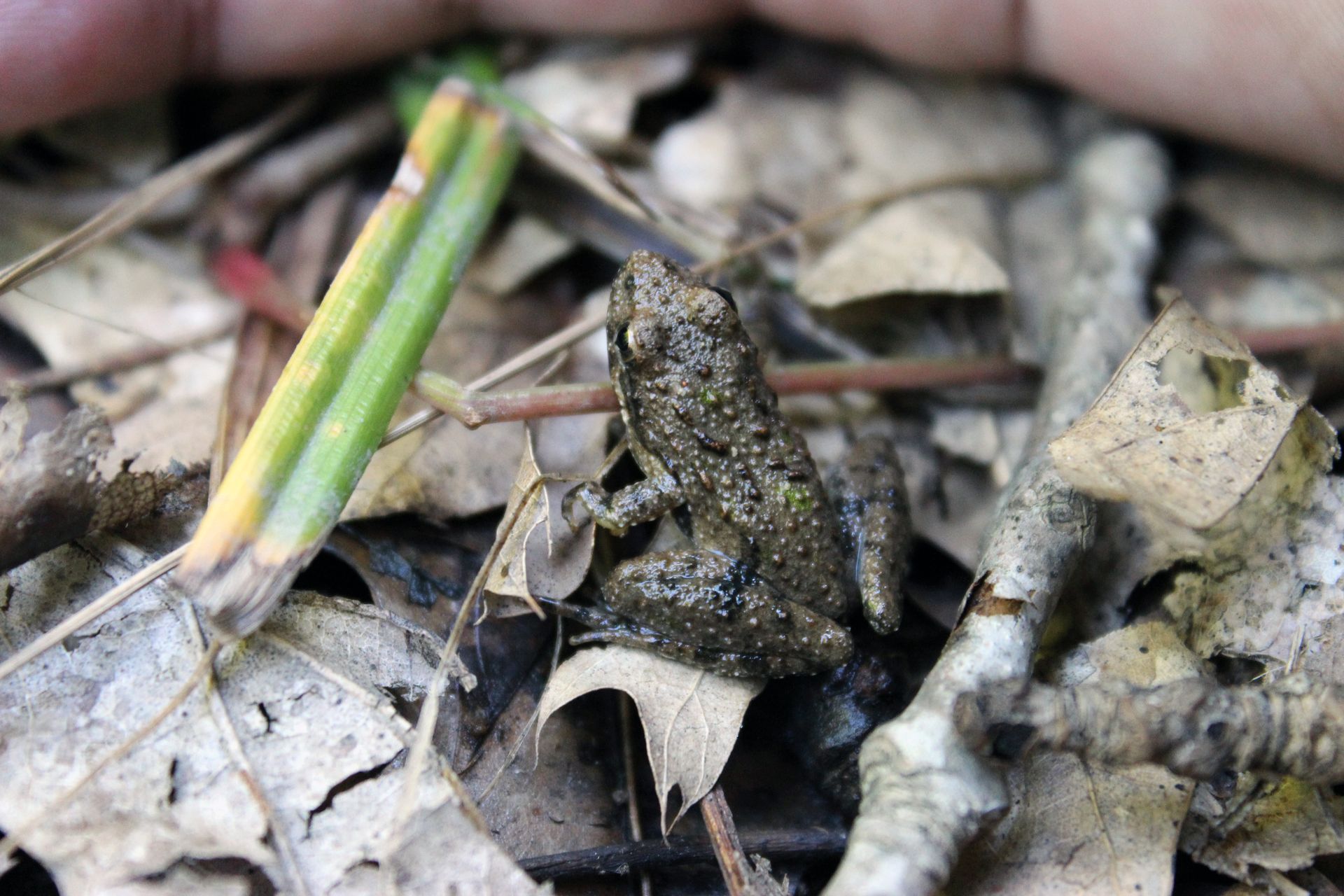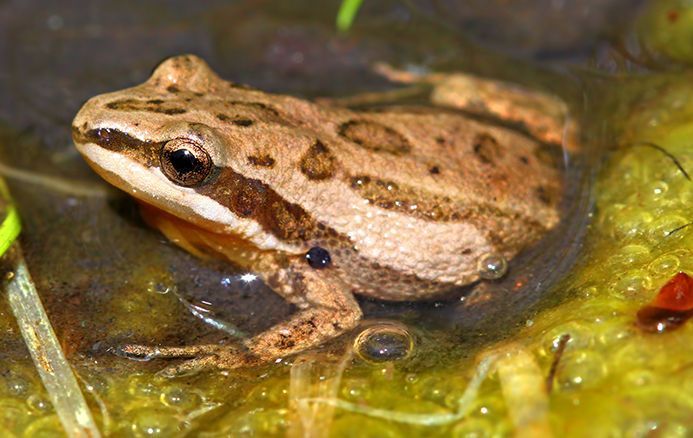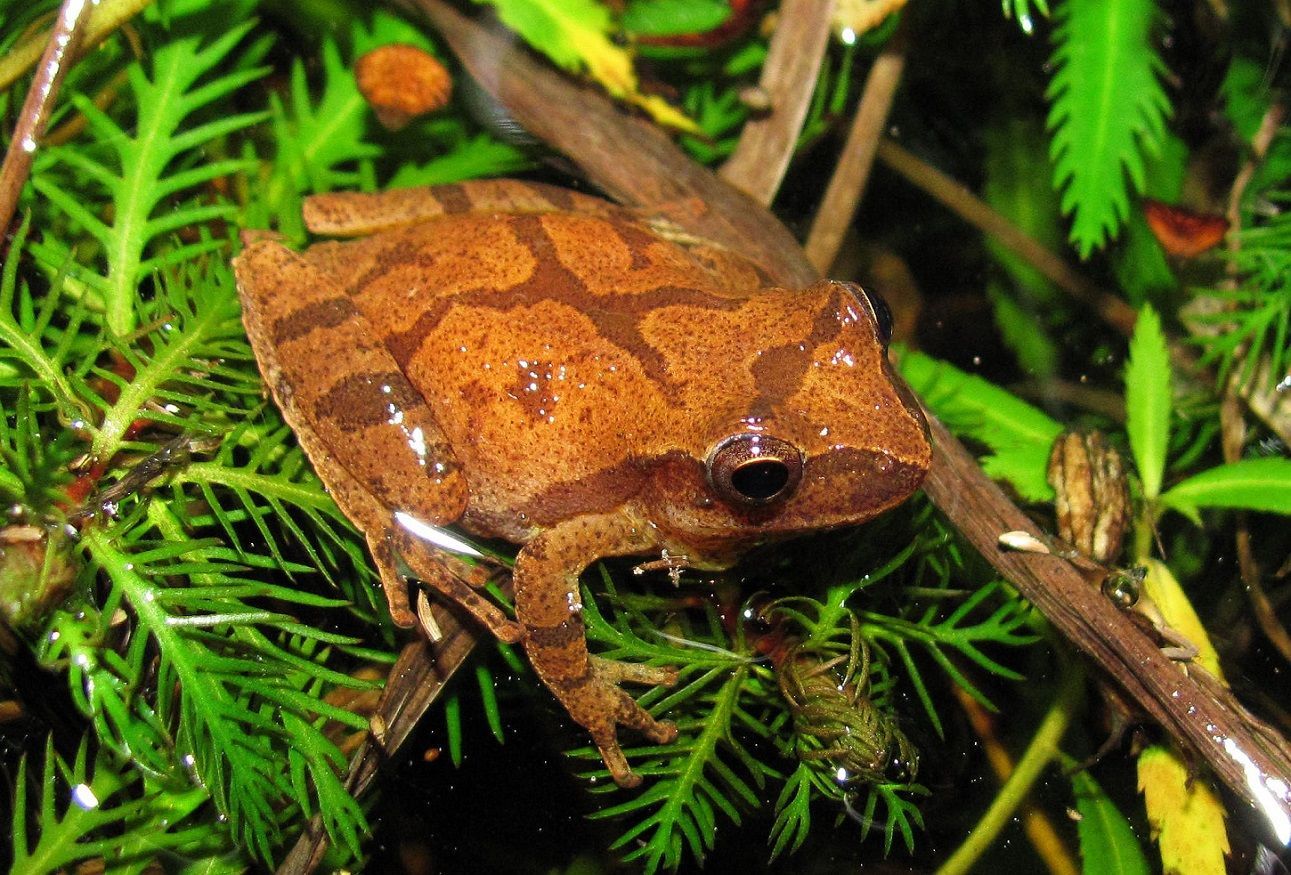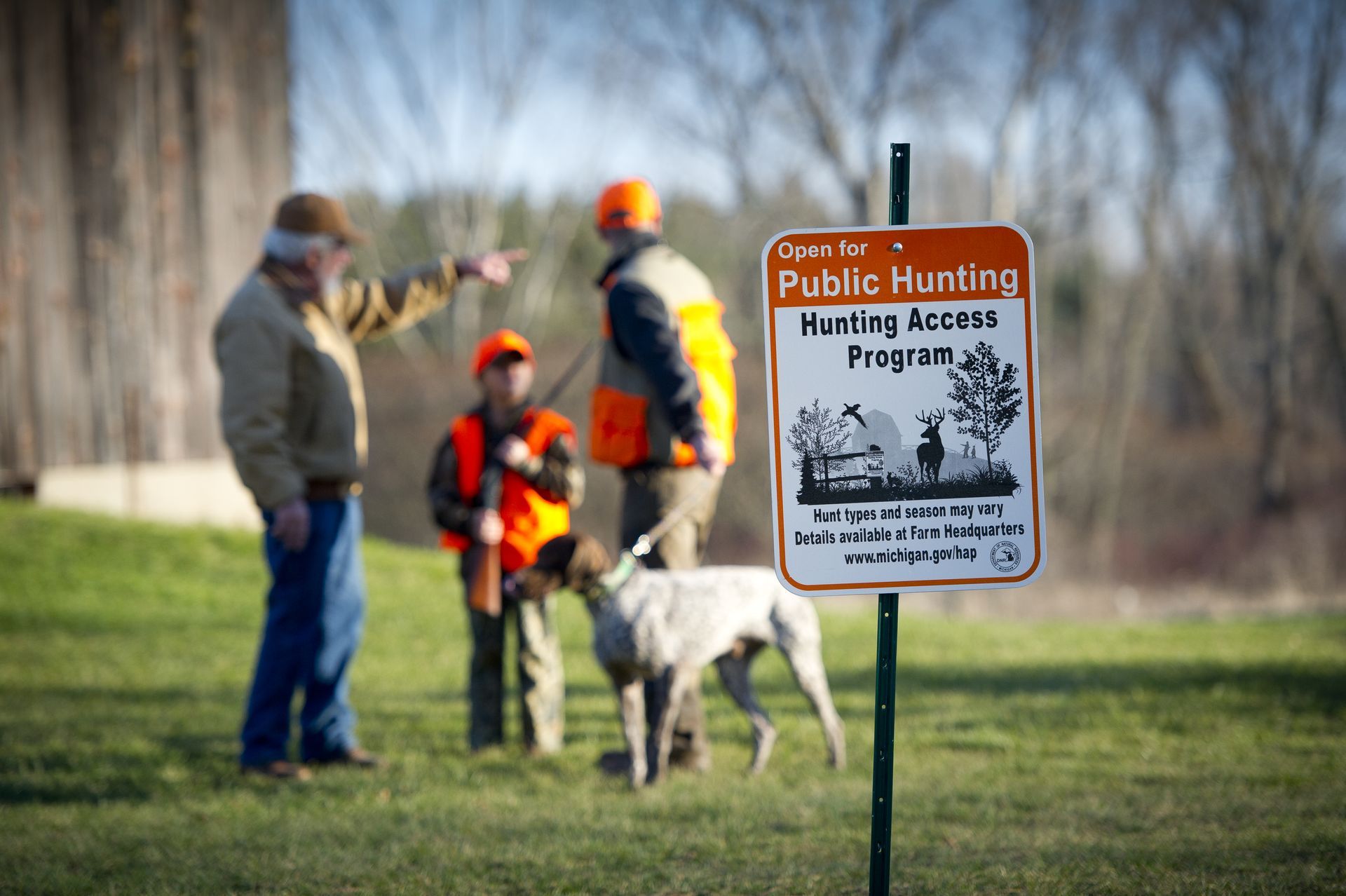Leaping into World Frog Day: Blanchard's Cricket Frog
Alongside the first day of spring, World Frog Day is taking place on March 20th to raise awareness for frogs, highlighting threats and species extinctions taking place. Due to their sensitivity to environmental changes, frogs are considered an indicator species for a poor-quality local environment. This also means that disruptions to the environment, like pollution, can contribute to declining numbers of amphibians like frogs, in addition to diseases like chytridiomycosis. This fungal disease has been the leading cause of many species' extinctions, has impacted over 350 species of amphibians, and is spread by human movement with no identified vaccine, according to the Cornell Wildlife Health Lab. The range of this disease is widespread across the world, including within the Midwest. To help raise awareness for our frogs in Michigan, one threatened species will be investigated: the Blanchard’s cricket frog (Acris blanchardi).
Current Status
The range of the Blanchard's cricket frog is confined to the continent of North America. This species can be found across the central United States, however, there are declining populations in the northern and western parts of the range, according to Amphibia Web. The frog is considered endangered in Minnesota and Wisconsin and is threatened in Michigan, per the United States Geological Survey (USGS). The cricket frog is protected in the state of Michigan, shielding it from being collected or harmed per the 2025 Fishing Regulations.
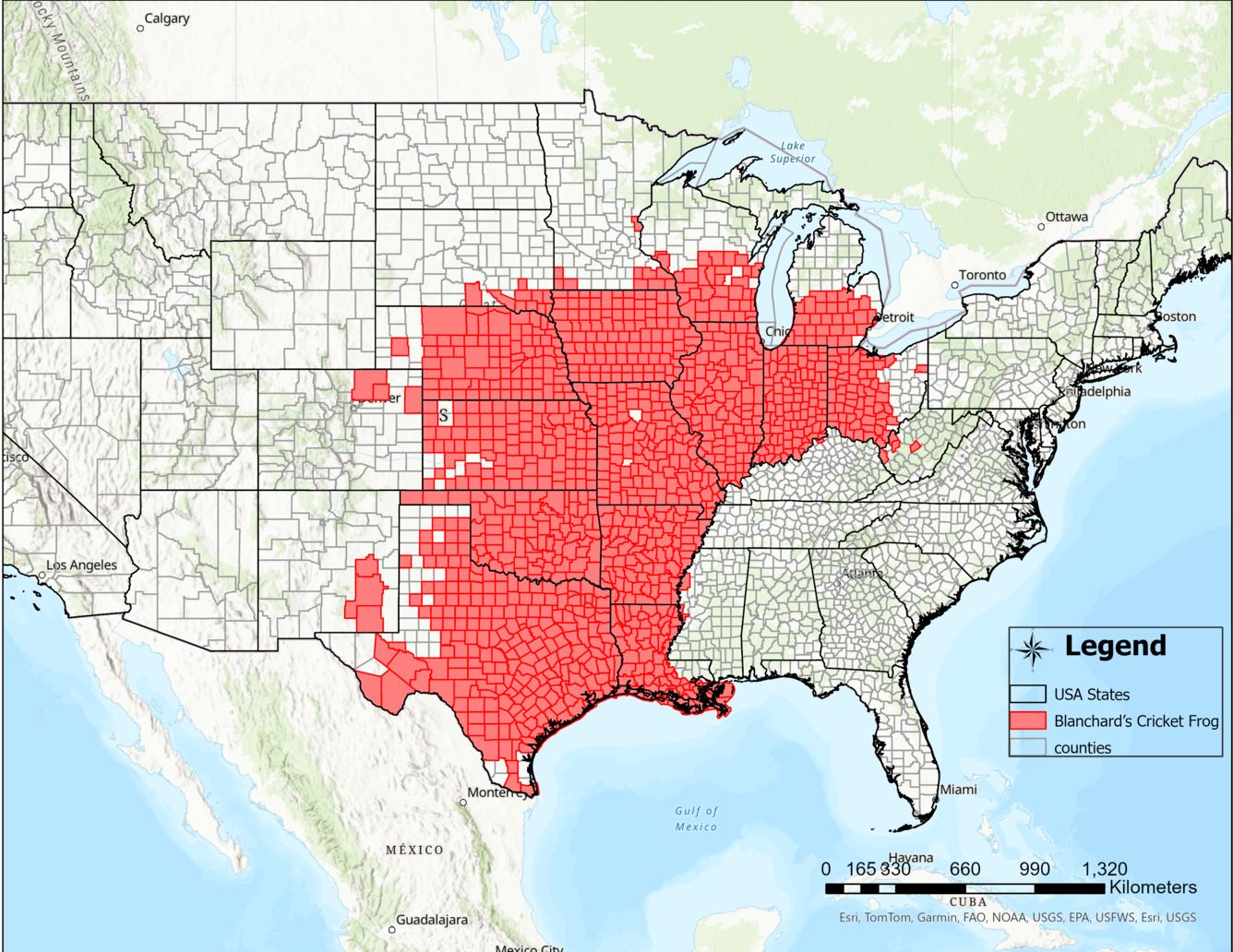
History
The northern and western range saw declining populations starting in 1970, as reported by Amphibia Web. The Blanchard’s cricket frog is part of the treefrog family, which has been recorded in 19 counties of southern Michigan along with Leelanau County. However, the Michigan Natural Features Inventory (MNFI) reports a decline in Michigan since the mid-1980s, with only 50 documented sites since in the southern portion of the state.
Characteristics
As tadpoles, the Blanchard's cricket frog can be identified by a black-tipped tail; however, Amphibia Web recognizes this is not a universal characteristic and is found to be white in some locations. According to USGS, the overall color of individuals at this age is dark green with spots and yellow bellies.
The coloration of this species as adults ranges largely from tan to olive green, with a prevalent dark rear-facing triangle between their eyes and dark vertical bars going down the mandible. Adults of the species can reach up to 1.5 inches in length and have warty, textured skin, as stated by MNFI. Sexual dimorphism allows for easily identifiable characteristics between males and females of this species during the breeding season (May to July), during which males have a darker throat and yellow vocal pouch, in addition to differences in calls.
MNFI identifies other native frogs like the western chorus frog and northern spring peeper, which can make species identification a bit more challenging in Michigan. The chorus frog has a distinguishing light stripe along the mandible and brown stripes lengthwise down the body with a lighter triangle on its head. Another species that is commonly found and heard during the spring in Michigan is the spring peeper. This species has an irregular X-shape on its back with smooth skin.
Conservation
The Blanchard’s cricket frog plays both roles of predator and prey within the ecosystem, influencing other species populations from both sides. For this species of tree frog, habitat loss and degradation of wetlands are the largest known contributing factors to the species' decline. MNFI identifies the preferred habitat to include areas with permanent water with mud flats as the species is the most aquatic treefrog in North America. The species relies on crevices or vegetation along shorelines for hibernation, which are often removed to increase the value and aesthetics of lakefront homes. Additionally, due to the sensitivity of frogs to environmental conditions, this species is negatively impacted by agricultural runoff, in which buffers can be used to minimize exposure where the species is present, according to MNFI. Introduced fish species and bullfrogs, while native, can cause harm to cricket frog populations by consuming eggs or tadpoles of the species before they are fully developed.
Conservation efforts have taken place in Minnesota for surveys to locate existing populations and protect them as recognized by the Animal Diversity Web. After recording these locations, there were recommendations for fertilizer and pesticide use nearby, as well as wetland maintenance to protect the habitat. Taking into consideration environmental precautions like these is common in protecting threatened and endangered species.
Learn More
Visit worldfrogday.org to learn more about events and other ways to contribute. Other information about Michigan frogs and toads can be found on the Michigan Department of Natural Resources website. Additionally, it is best to avoid handling amphibians if there is a chance of residual repellent, sunscreen, or soap on your hands, which can harm individuals. Michigan United Conservation Clubs hosts habitat improvement projects through the On the Ground (OTG) program across the state, some of which impact amphibian populations. Our upcoming project in Rochester Hills on April 19th, cleaning up the Clinton River, will help remove debris the make the waterways cleaner for species that rely on it.
Recent Posts
